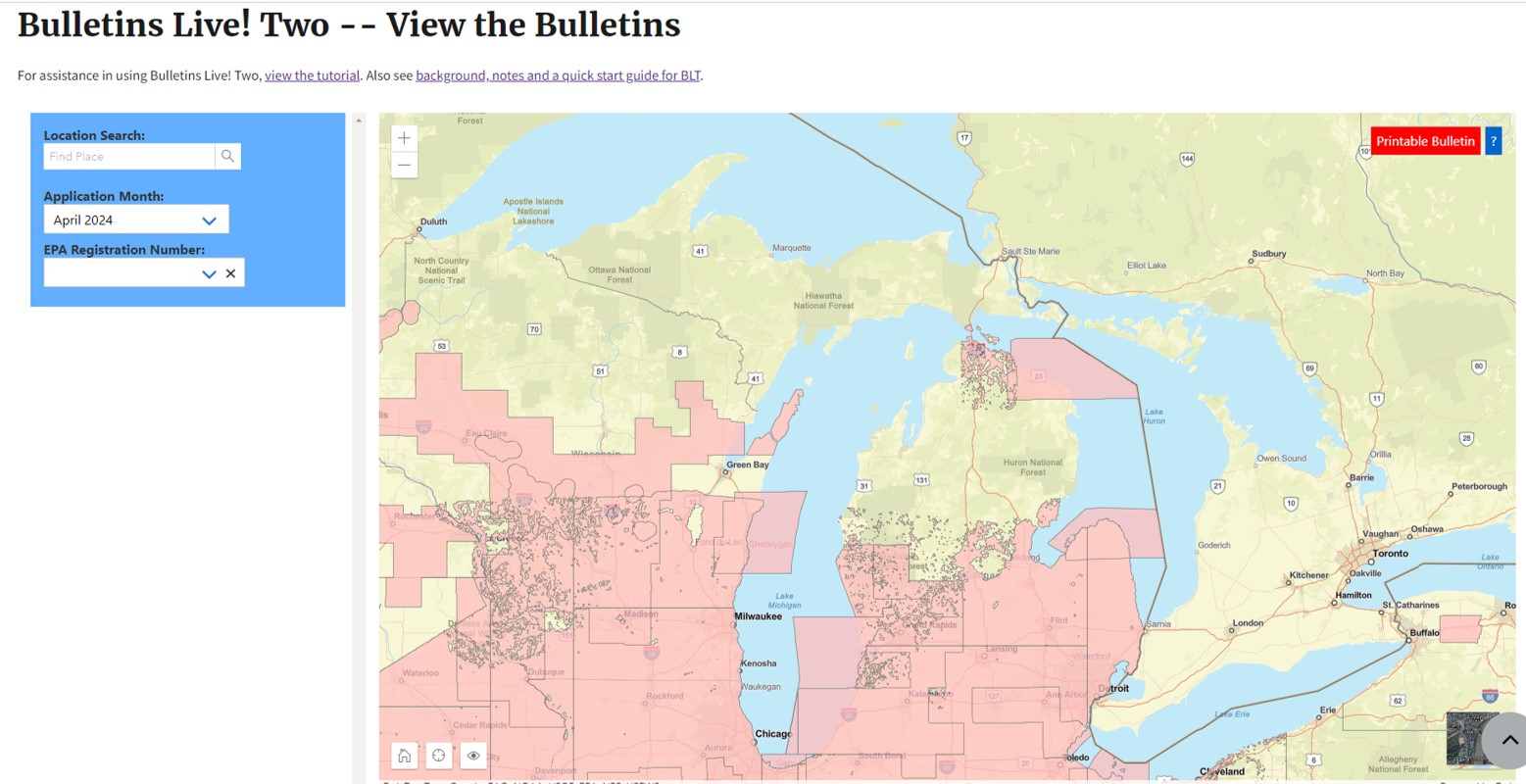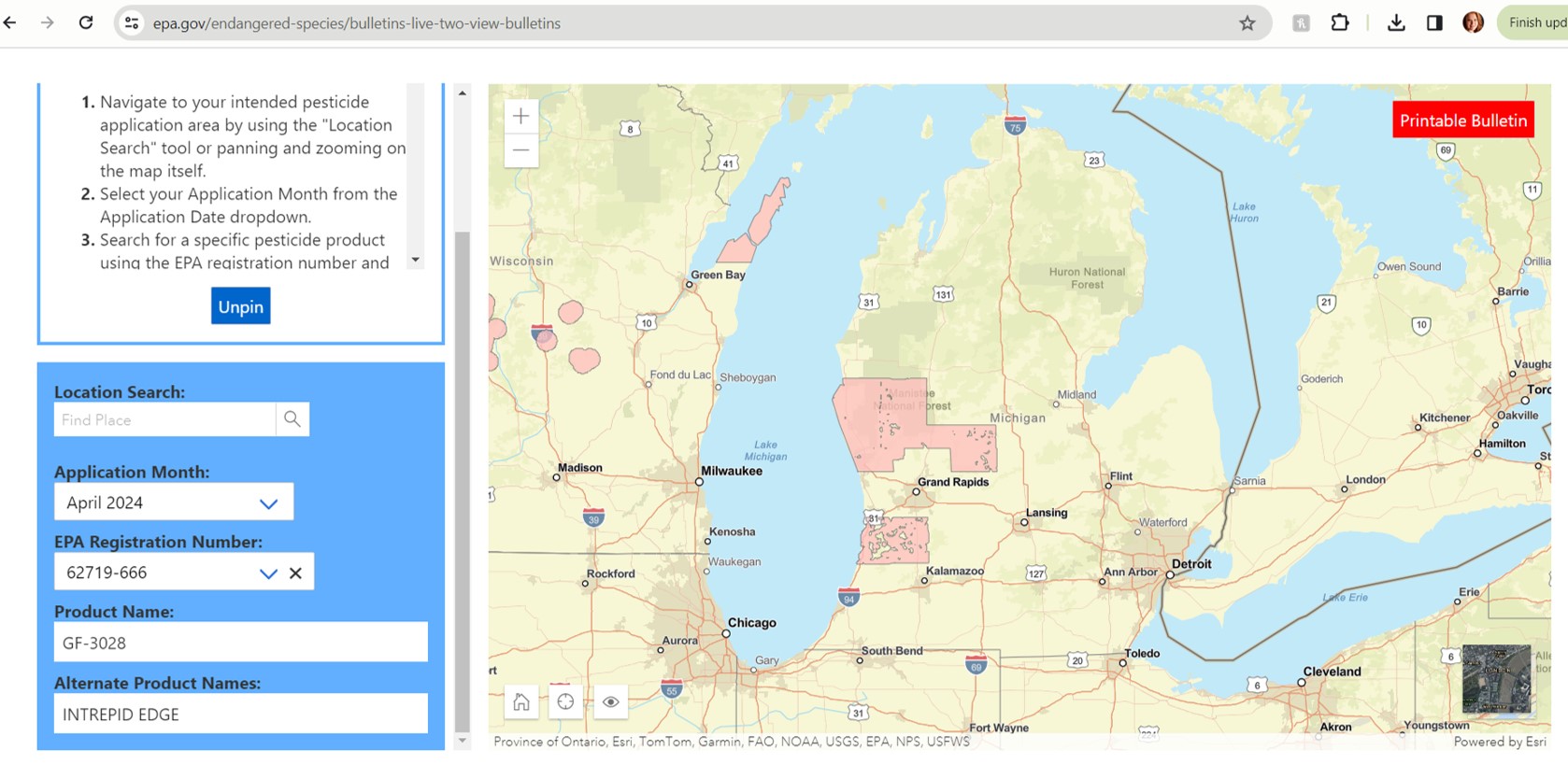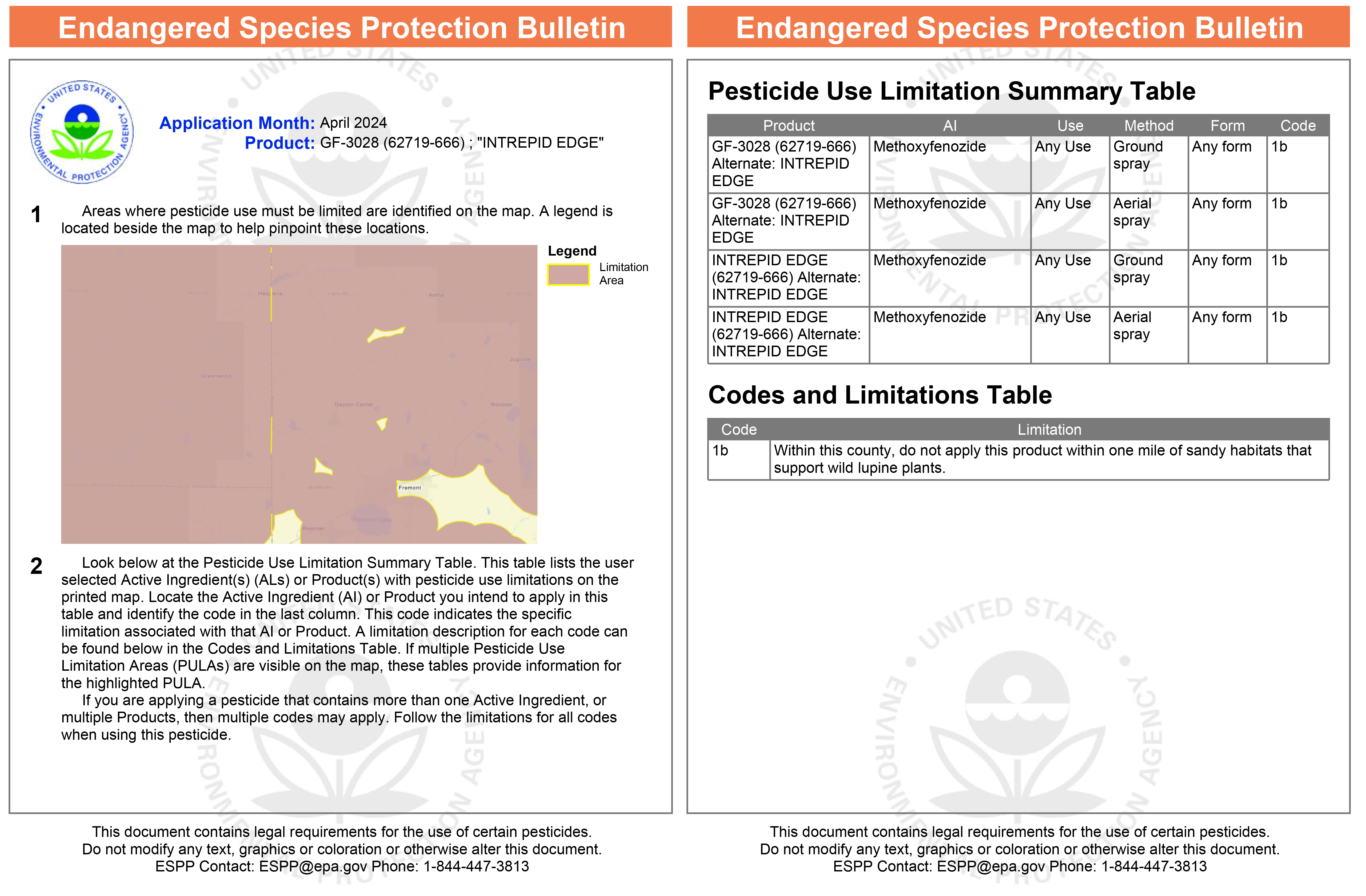Agricultural pesticides are undergoing significant label changes that growers should be aware of
An ever-increasing number of pesticide labels require applicators to utilize the Bulletins Live! Two system to check for additional use limitations to protect endangered species and their habitat.

Anyone applying agricultural pesticides (certified applicator or not) needs to be aware of changes coming to pesticide labels across the United States. In an effort to address concerns related to the impact of pesticides on threatened or endangered species and in response to ongoing litigation, the Environmental Protection Agency (EPA) has developed an online system called Bulletins Live! Two that determines if additional pesticide use limitations are needed to protect listed species or habitat based on the site location, pesticide product and application month. The system is intended to avoid blanket use restrictions and instead limit restrictions to geographic and time-specific use patterns that should be avoided to protect endangered species and their habitat.
The Endangered Species Act (ESA) of 1973 provides a framework to conserve and protect endangered and threatened species and their habitats both domestically and abroad. An endangered species is an organism threatened by extinction. Threatened species are likely to become endangered soon. Together, threatened and endangered species are commonly referred to as listed species. The ESA requires listing determinations consider only scientific and commercial information; economic factors are not allowed to be considered as part of the listing process. Species may also be removed from the list if they no longer need protection or have a change in status. Michigan has many threatened and endangered species.
The EPA plays an important role in implementing the ESA. This includes ensuring that the use of pesticides does not jeopardize listed species or adversely impact their designated critical habitat. If the EPA determines that use of a pesticide may impact listed species, it initiates consultation with U.S. Fish and Wildlife Service or the National Marine Fisheries Service to identify potential negative impacts. The agencies also develop and propose measures to mitigate these negative impacts. Based on the outcomes of this process, the EPA may require additional blanket pesticide use limitations. These limitations are often included in the "Directions for use" or "Environmental hazards" section of the pesticide label.
However, if it is determined pesticide use limitations are only needed in limited geographic areas to protect listed species or critical habitat locations, the EPA implements these changes through bulletin that define pesticide use limitation areas (PULA) based on the site location, pesticide product and application month. These bulletins are made available via the Bulletins Live! Two system, which allows applicators to check their planned application parameters to determine if any additional pesticide use limitations are required to protect listed species or their habitat. Applicators are only required to consult the Bulletins Live! Two system if the label that came with the pesticide container in their possession directs them to.

Not all products require use of the Bulletins Live! Two system. At this time, a limited number of herbicides and insecticide labels are impacted. Impacted labels will include a new directive under the ‘directions for use’ section of the label to visit the Bulletins Live! Two (BLT) webpage to check for additional pesticide limitations based on the application parameters (date, location, product). Applicators are only required to consult the Bulletins Live! Two system if the label that came with the pesticide container in their possession directs them to. If a pesticide label directs you to Bulletins Live! Two, you are required to follow the pesticide use limitations found on both the label and on the bulletin generated by Bulletins Live! Two. Compliance is the applicators’ responsibility.
To generate a bulletin, you will need the following information: (1) Location that you can navigate to manually or enter as an address or coordinates; (2) application month and year; and (3) the product EPA registration number, found on the pesticide label. The bulletins themselves are simply a document that describes any additional pesticide use limitations based on the proposed application parameters. It includes a map of the location, the application timing and product. Applicators may check the BLT system up to 6 months in advance of an application, so growers are encouraged to carefully check the labels of products currently on hand and the labels of commonly utilized products well in advance of the growing season. Though not required, applicators are encouraged to print or save the bulletin along with their pesticide records even if no additional pesticide use limitations apply.
It is important to note that there may not be any additional specific use limitations based on the application parameters. At this time (April 2025) there are less than 15 products that have use limitations in Michigan, though many more labels will require growers to check the BLT website. This could be because EPA has not yet identified if additional pesticide use limitations are needed or there are no additional geographically specific use limitations based on the use pattern. There are also situations where an applicator finds the proposed application has additional limitations, but the product may still be applied if specific runoff and drift mitigation practices are followed. There are very few instances where pesticide use is completely unallowable. There may also be situations where a PULA is no longer applicable as the tool is refined.
Compliance with all label directives including using Bulletins Live! Two is mandatory and the applicator’s responsibility. Ideally, applicators will carefully check the labels of products they are considering before purchase to fully understand any use limitations on their site. Currently, most of the impacted labels with additional pesticide use limitations are agricultural herbicides and insecticides, but additional products are added regularly with the inclusion of fungicides and other pesticides anticipated in the future. Because Bulletins Live! Two will continue to add new pesticides as products come up for registration review or first time registration, applicators need to continue to check all product labels carefully for this new directive.


For more information on navigating Bulletins Live! Two, view the EPA tutorial. For more information on the changes related to the Bulletins Live! Two system, visit the Michigan State University Extension Bulletins Live! Two webpage. For more information on how Michigan State University Extension is supporting efforts to conserve Michigan biodiversity, including listed species and critical habitat, visit the Michigan Natural Feature Inventory website.
This work is supported by the Crop Protection and Pest Management Program [grant no 2024-70006-43569] from the USDA National Institute of Food and Agriculture. Any opinions, findings, conclusions, or recommendations expressed in this publication are those of the author(s) and do not necessarily reflect the view of the U.S. Department of Agriculture.



 Print
Print Email
Email


